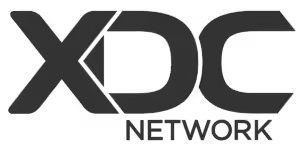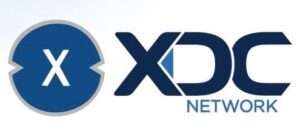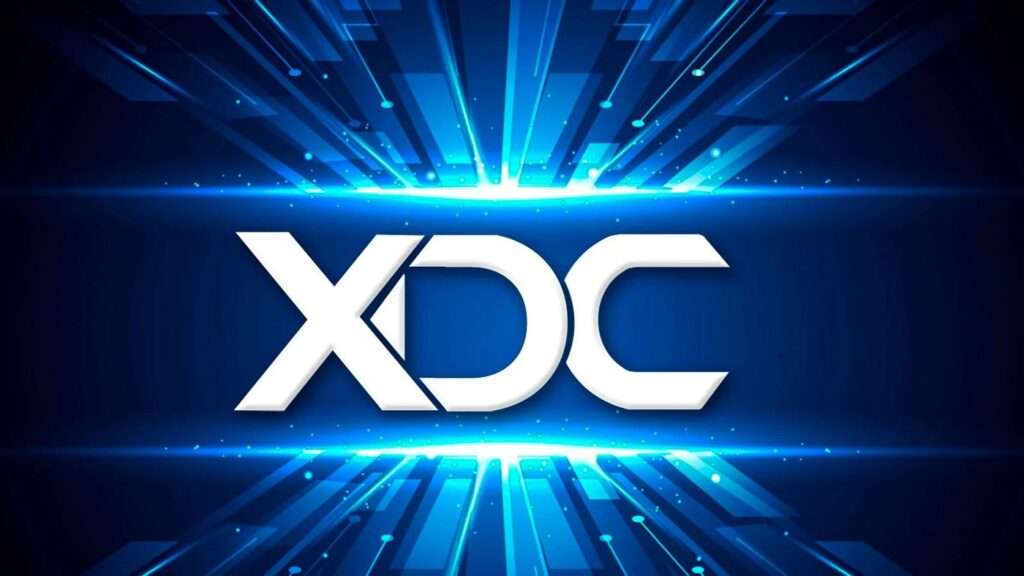Latest News
- From São Paulo to the Blockchain: How LIQI and XDC Are Reshaping Asset Issuance With Half A Billion in Tokenized Assets
- How LIQI and XDC Are Turning Brazil into a Global RWA Tokenization Powerhouse with $500 Million in Tokenized Assets
- 5 Real World Assets (RWA) Altcoins to Watch in March 2025
- XDC Network and Archax Launch Four Tokenized Funds
Current Price
The current price of XDC is $0.07085
Introduction
The XDC Network presents a compelling hybrid blockchain solution tailored for enterprises and financial institutions, merging the advantages of both public and private architectures. With its Delegated Proof-of-Stake (DPoS) consensus mechanism, it promises enhanced transaction speeds and cost-efficiency, essential for modern financial applications. However, as we explore its key features and potential drawbacks, one must consider whether XDC truly stands out in a saturated market or if it merely follows existing trends. The implications of its unique attributes are worth examining more closely.
Quick Overview
- XDC Network offers a hybrid blockchain design, combining public and private features for enhanced scalability and efficiency in enterprise applications.
- Utilizing a Delegated Proof-of-Stake consensus mechanism, XDC achieves rapid transaction speeds and low fees, making it cost-effective for high-frequency trading.
- The platform supports various use cases, including supply chain management, decentralized finance, and tokenization of digital assets, promoting innovation in multiple sectors.
- XDC emphasizes security through robust protocols, including cryptographic techniques and regular audits, ensuring data integrity and user trust.
- Regulatory challenges and centralization risks may impact XDC’s long-term viability and governance, necessitating careful consideration for potential investors.

Overview of XDC Network
The XDC Network frequently positions itself as a robust blockchain platform designed to cater specifically to the needs of enterprises and financial institutions. Built on the Ethereum Virtual Machine (EVM), the network harnesses the capabilities of both public and private blockchains, hence offering flexibility in deployment.
This hybrid architecture enables organizations to maintain control over their data while benefiting from the transparency and security intrinsic to blockchain technology.
The XDC Network employs a delegated proof-of-stake (DPoS) consensus mechanism, optimizing transaction speed and reducing latency, which is vital for enterprise applications that demand real-time processing. By facilitating smart contracts and decentralized applications (dApps), it fosters innovation across various sectors, including trade finance, supply chain management, and digital identity verification.
Moreover, XDC emphasizes interoperability, allowing seamless integration with existing financial systems, which is a fundamental aspect for enterprises looking to leverage blockchain while minimizing disruption.
The platform’s focus on regulatory compliance further positions it as a viable solution for institutions traversing complex legal landscapes. As a result, the XDC Network stands out as a forward-thinking platform, addressing both the technological and operational challenges faced by enterprises today.
Key Features of XDC
XDC Network’s architecture is complemented by several key features that enhance its functionality and appeal to enterprise users. One of the most notable attributes is its hybrid blockchain design, which combines the advantages of both public and private networks. This flexibility allows organizations to maintain confidentiality while benefiting from the transparency and security of public blockchains.
In addition, XDC employs a unique consensus mechanism called Delegated Proof of Stake (DPoS), which optimizes transaction speeds and efficiency. This feature is particularly beneficial for enterprises requiring rapid processing times to handle high transaction volumes.
Moreover, XDC’s interoperability with other blockchain networks facilitates seamless integration, enabling businesses to leverage existing infrastructures without disruption.
The platform also incorporates smart contract functionality, allowing for the automation of complex business processes and enhancing operational efficiency. Its robust security protocols, including cryptographic algorithms, guarantee data integrity and protect against unauthorized access.
Lastly, XDC Network’s commitment to regulatory compliance equips businesses with the necessary tools to navigate the evolving landscape of blockchain legislation, making it a viable choice for enterprises seeking to innovate while adhering to legal standards.
These features collectively position XDC as a compelling option for businesses looking to adopt blockchain technology.

Benefits of Using XDC
The XDC Network offers significant advantages that enhance its appeal for users and developers alike.
With its enhanced transaction speed and low transaction fees, it provides a cost-effective and efficient platform for blockchain applications.
Additionally, the robust security features guarantee a high level of trust and integrity, making it a compelling choice in the competitive blockchain landscape.
Enhanced Transaction Speed
Achieving rapid transaction speeds is an essential factor in the effectiveness of any blockchain network, and XDC excels in this area through its unique consensus mechanism. Utilizing a delegated proof-of-stake (DPoS) model, XDC considerably reduces block confirmation times while maintaining security and decentralization. This innovative approach allows for transaction processing in mere seconds, positioning XDC as a viable competitor in the fast-evolving blockchain landscape.
The architecture of the XDC Network is optimized for scalability, enabling it to handle thousands of transactions per second. This capability is vital for enterprise applications that require instantaneous data exchange and confirmation, such as trade finance and supply chain management.
Moreover, the network’s interoperability with existing financial systems enhances its utility, allowing for seamless integration without compromising speed.
In an era where efficiency is paramount, XDC’s enhanced transaction speed not only streamlines operations but also fosters trust among users. By minimizing latency and maximizing throughput, the XDC Network empowers businesses to function in real-time, facilitating rapid decision-making and execution.
This strategic advantage makes XDC an appealing choice for organizations looking to leverage blockchain technology for operational excellence.
Low Transaction Fees
In conjunction with its impressive transaction speeds, the XDC Network also offers remarkably low transaction fees, making it an attractive option for businesses and individuals alike. This cost-effective model is particularly beneficial for high-frequency trading and microtransactions, where traditional blockchain platforms often impose significant fees that can erode profit margins.
XDC’s fee structure is designed to facilitate scalability without burdening users with excessive costs. By utilizing a hybrid model that combines the best of public and private blockchain technologies, XDC minimizes network congestion and reduces the computational load, resulting in lower fees. Specifically, transaction costs on the XDC Network are a fraction of those on Ethereum and Bitcoin, which historically suffer from high gas fees during peak usage periods.
Moreover, the predictability and consistency of XDC’s fees enhance its utility for businesses, allowing for more accurate budgeting and financial planning. This aspect is vital for enterprises looking to integrate blockchain solutions into their operations without incurring unpredictable costs.
Collectively, these attributes position the XDC Network as a compelling choice for users prioritizing both efficiency and economic viability in their blockchain transactions.
Robust Security Features
How does the XDC Network guarantee the security of its transactions and user data in an increasingly digital landscape?
The XDC Network employs a multi-faceted approach to security that combines advanced cryptographic techniques, decentralized consensus mechanisms, and rigorous protocol standards. At the core of its architecture is the XDC 2.0 protocol, which utilizes a hybrid model of public and private blockchain features. This allows for transparent yet secure transactions, enhancing trust among users.
Moreover, the network implements a robust consensus algorithm that mitigates the risks associated with double-spending and unauthorized access. By leveraging a Delegated Proof of Stake (DPoS) mechanism, XDC assures that only verified validators participate in transaction validation, thereby reducing the likelihood of malicious activities.
Additionally, the inclusion of smart contracts fortified by formal verification processes contributes to the overall security framework. This guarantees that contracts execute as intended, preventing vulnerabilities that could be exploited.
With regular audits and an active developer community, the XDC Network continuously evolves to address emerging security threats, making it a reliable choice for users concerned about data integrity and transaction safety in the digital age.
Potential Drawbacks
While the XDC Network presents numerous advantages, it is essential to contemplate potential drawbacks that could impact its long-term viability.
Centralization concerns arise from the governance structure, which may lead to a concentration of power that undermines the decentralized ethos of blockchain technology.
Additionally, regulatory uncertainty poses risks, as evolving legal frameworks could affect the network’s operations and user adoption.
Centralization Concerns
Although the XDC Network offers numerous advantages, its centralization raises significant concerns that merit careful examination. Centralization in blockchain networks can lead to a concentration of power among a limited number of validators or nodes, which undermines the fundamental principles of decentralization, transparency, and security.
In the case of XDC, this centralization is largely attributed to its consensus mechanism, which relies on a delegated proof-of-stake model. While this approach can enhance transaction speed and efficiency, it poses risks related to governance and potential manipulation.
With fewer entities controlling the network, the likelihood of collusion increases, potentially compromising the integrity of the system. Additionally, the reliance on a small group of stakeholders for decision-making can hinder the network’s adaptability to changing market conditions or technological advancements.
This governance structure may also discourage broader community participation, limiting innovation and reducing the network’s resilience against external threats.
Furthermore, centralization may lead to vulnerabilities in the face of regulatory scrutiny, as a concentrated group of stakeholders could be more easily targeted by authorities.
Consequently, while the XDC Network presents significant opportunities, its centralization warrants critical consideration by prospective users and investors.
Regulatory Uncertainty
The centralization concerns surrounding the XDC Network intertwine with the broader issue of regulatory uncertainty, which poses additional challenges for both users and investors. As jurisdictions worldwide grapple with the evolving landscape of blockchain technology and cryptocurrencies, XDC’s centralized governance model may attract scrutiny from regulators.
The potential for regulatory intervention could hinder the network’s scalability and adoption, impacting its long-term viability.
Moreover, the ambiguity surrounding legal classifications—whether tokens are securities or utility assets—creates an environment rife with risk. Investors may find themselves maneuvering through a maze of compliance requirements, which can lead to increased costs and potential legal liabilities. Such uncertainty can deter institutional investments, critical for the network’s growth and credibility.
Additionally, regulatory frameworks can vary considerably across regions, complicating the global expansion of the XDC Network. A lack of harmonization in regulations might lead to fragmented markets and inhibit cross-border transactions.
Ultimately, the interplay between centralization and regulatory uncertainty poses a dual threat, compelling stakeholders to remain vigilant and adaptable as they pursue opportunities within the XDC ecosystem while safeguarding against potential legal repercussions.
Use Cases and Applications
XDC Network presents a multifaceted platform that supports various use cases and applications within the blockchain ecosystem. One of its primary applications is in the area of supply chain management, where XDC enables real-time tracking of goods and verification of transactions. This transparency enhances trust among stakeholders and reduces fraud.
Moreover, XDC facilitates the creation of decentralized finance (DeFi) applications, allowing users to engage in lending, borrowing, and trading without relying on traditional financial intermediaries. Its hybrid blockchain architecture supports both public and private transactions, making it suitable for enterprises seeking to maintain confidentiality while leveraging the benefits of blockchain technology.
In the context of tokenization, XDC Network allows for the creation of digital assets, including securities and real estate, thereby democratizing access to investment opportunities. Additionally, the platform supports smart contracts, enabling automated execution of agreements and reducing the need for intermediaries, which streamlines operations across various industries.
Lastly, the XDC ecosystem is conducive to cross-border payments, enhancing transaction speed and reducing costs. These diverse use cases underscore the network’s versatility and potential to drive innovation across multiple sectors.
Comparison With Other Blockchains
When evaluating the XDC Network in comparison to other blockchain platforms, it becomes evident that its unique hybrid architecture sets it apart. Unlike traditional blockchains that operate solely on a public or private basis, XDC combines the benefits of both, enabling enhanced scalability and flexibility. This dual-layer approach allows enterprises to leverage private chains for secure, permissioned transactions while utilizing public chains for broader accessibility.
Moreover, XDC’s consensus mechanism, Delegated Proof of Stake (DPoS), enhances transaction throughput and reduces latency, distinguishing it from platforms like Ethereum, which still grapple with scalability issues.
The XDC Network’s focus on interoperability also positions it advantageously against competitors such as Hyperledger and Polkadot. By facilitating seamless communication between different blockchain ecosystems, XDC enhances its utility for enterprise applications.
Furthermore, the network’s smart contract capabilities are optimized for transaction efficiency, catering specifically to sectors like trade finance, where efficiency is paramount. In contrast, other platforms may prioritize general-purpose applications, potentially leading to inefficiencies in specialized use cases.
Future Outlook for XDC
As the blockchain landscape continues to evolve, the XDC Network is poised for significant growth and adoption, particularly within enterprise sectors. With its hybrid architecture that combines both public and private blockchain capabilities, XDC offers a unique solution tailored to the needs of businesses seeking to leverage blockchain technology without compromising on security or scalability.
The network’s emphasis on interoperability is another critical factor that enhances its future potential. As organizations increasingly demand seamless integration with existing systems and other blockchain networks, XDC’s ability to facilitate cross-chain transactions positions it as a valuable asset in the evolving digital ecosystem.
Additionally, the growing interest in decentralized finance (DeFi) and tokenization of assets will likely drive further use cases for XDC, particularly in supply chain management and trade finance.
Moreover, the strategic partnerships and collaborations that XDC has established with various enterprises and institutions indicate a commitment to fostering real-world applications. As regulatory frameworks continue to develop, XDC is well-positioned to adapt and align with compliance requirements, enhancing its attractiveness to enterprise clients.
Investment Considerations
With the XDC Network positioning itself for substantial growth in enterprise applications, potential investors should consider several factors before committing capital. The unique attributes of the XDC Network, including its hybrid blockchain model and focus on interoperability, could present lucrative opportunities. However, careful analysis is essential.
- Market Demand: Evaluate the growing need for blockchain solutions in supply chain management and finance. Assess how XDC’s technology aligns with industry requirements.
- Regulatory Landscape: Understand the regulatory environment surrounding cryptocurrencies and blockchain technology. Compliance risks can greatly impact the viability of investments.
- Technological Innovation: Examine the ongoing development efforts within the XDC ecosystem. Innovations and partnerships with existing enterprises can enhance adoption rates and network utility.
- Community Engagement: Gauge the strength of the XDC community and developer support. A robust community can drive project visibility and foster long-term sustainability.
Frequently Asked Questions
What Is the History Behind the Creation of XDC Network?
The creation of XDC Network stemmed from the need for a scalable, efficient blockchain solution tailored for enterprise applications. Its development sought to integrate decentralized finance with traditional financial systems, enhancing interoperability and transaction speed for global trade.
How Does XDC Network Handle Transaction Security?
Transaction security is managed through advanced cryptographic techniques and a consensus mechanism that enhances data integrity. Additionally, smart contracts are employed to automate processes, ensuring secure, transparent transactions while minimizing risks associated with fraud and unauthorized access.
Is XDC Network Environmentally Friendly?
The environmental impact of blockchain networks is critical in today’s climate-conscious landscape. Evaluating energy consumption, consensus mechanisms, and sustainability initiatives reveals varying degrees of eco-friendliness, necessitating a thorough analysis of each network’s practices and innovations.
What Are the Governance Mechanisms Within XDC Network?
Governance mechanisms within decentralized networks typically involve consensus protocols, voting systems, and stakeholder participation. These frameworks guarantee decision-making transparency, facilitate protocol upgrades, and align network incentives, fostering a collaborative environment for sustainable development and ecosystem growth.
Can XDC Be Used for Cross-Border Transactions?
Cross-border transactions can benefit from blockchain technology due to enhanced security, speed, and reduced costs. Utilizing a decentralized network facilitates seamless international payments, promoting transparency and efficiency in global commerce and financial operations.
Wrapping Up
The XDC Network presents a compelling hybrid blockchain solution, effectively merging public and private functionalities to cater to the demands of enterprises and financial institutions.
Its Delegated Proof-of-Stake consensus mechanism facilitates rapid transactions while maintaining low operational costs. With diverse applications across supply chain management and decentralized finance, XDC demonstrates significant potential for scalability and interoperability.
However, careful consideration of its limitations and competitive landscape is essential for informed investment and adoption strategies in the evolving blockchain ecosystem.

